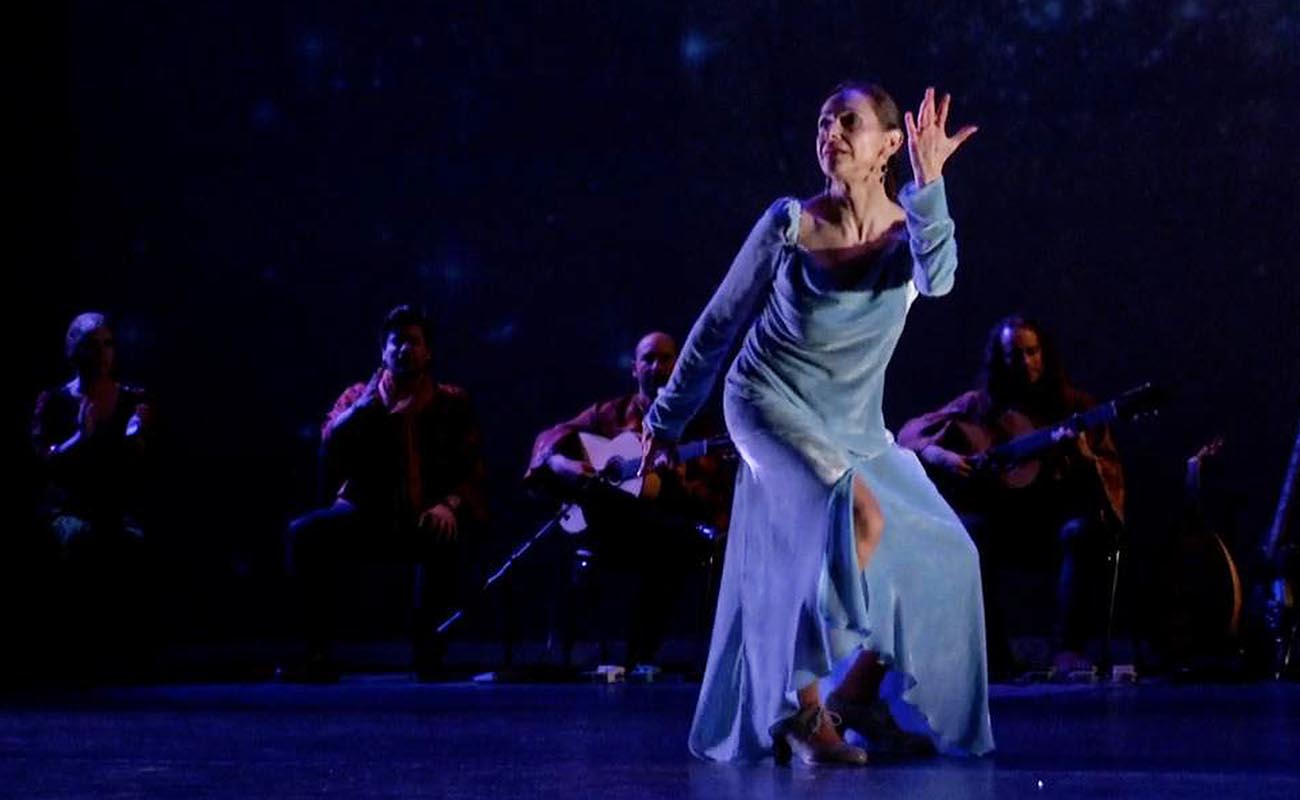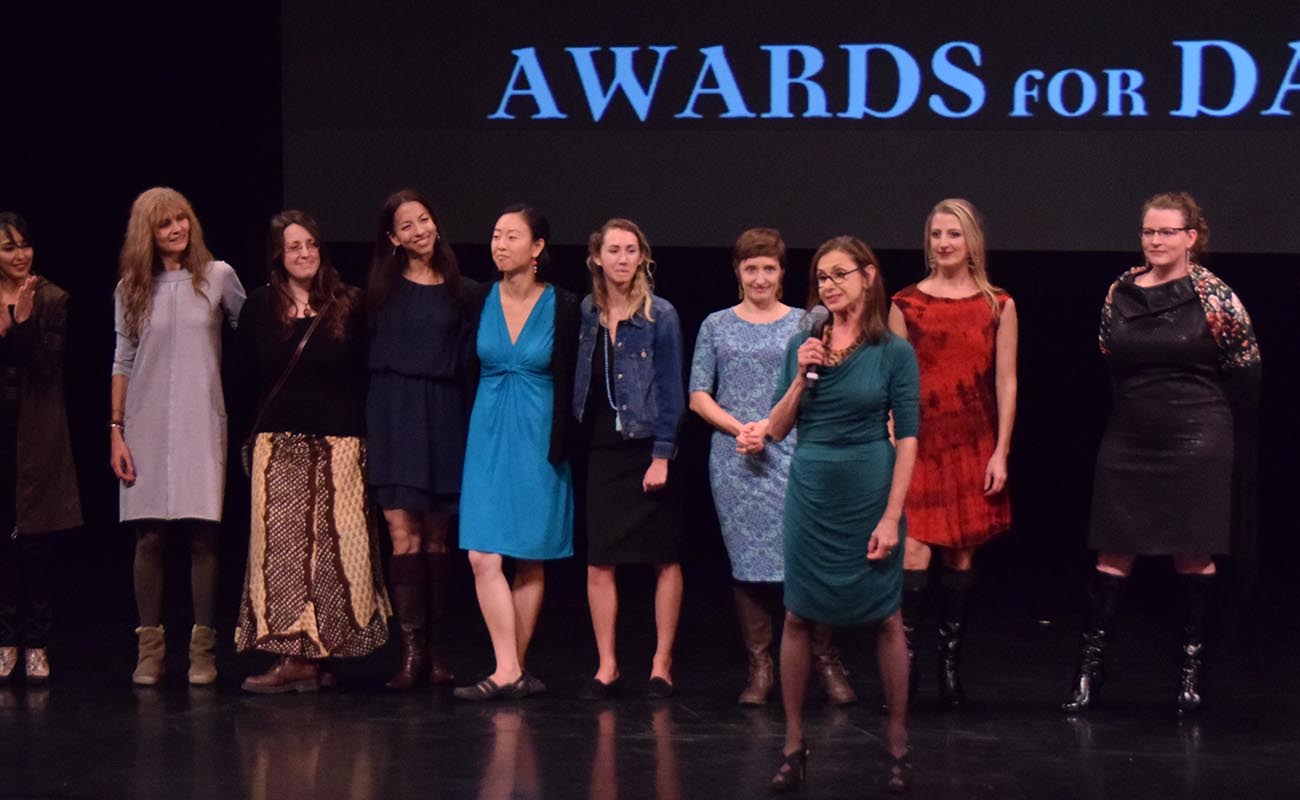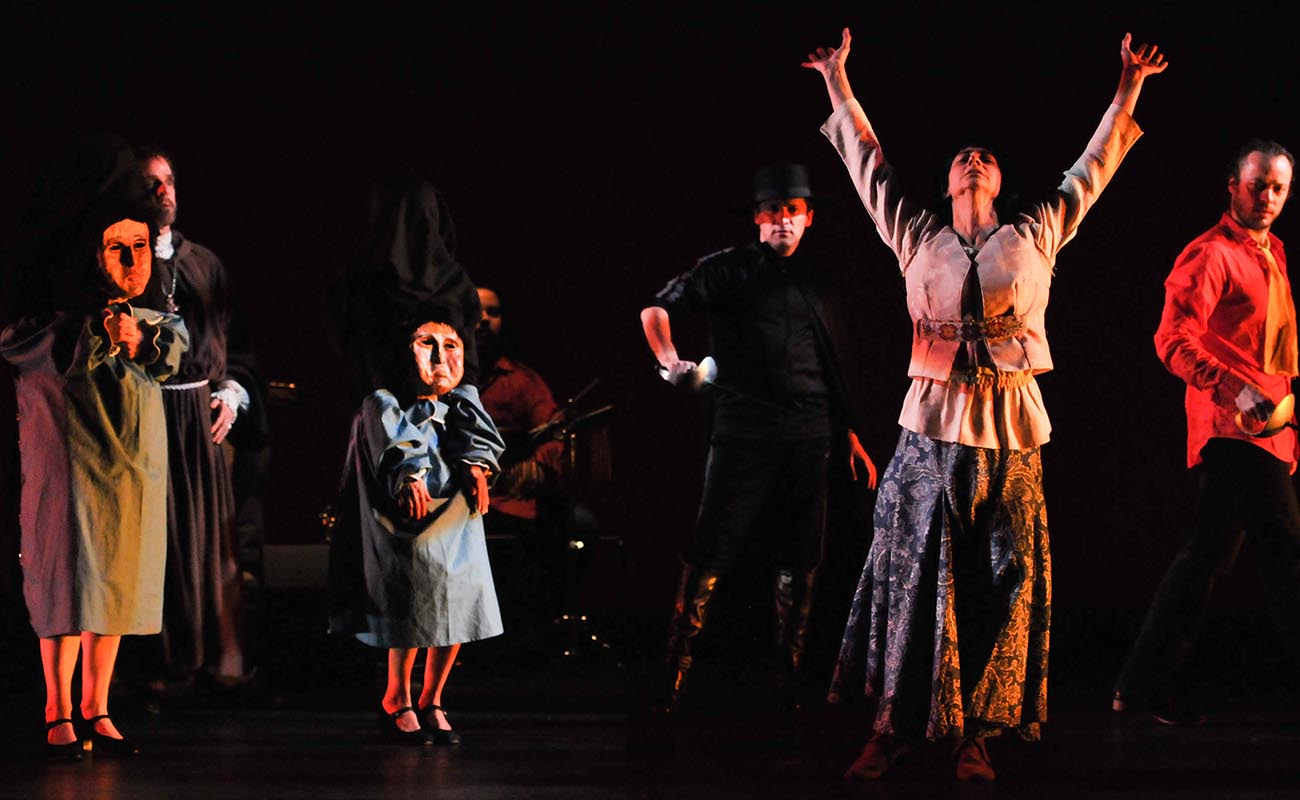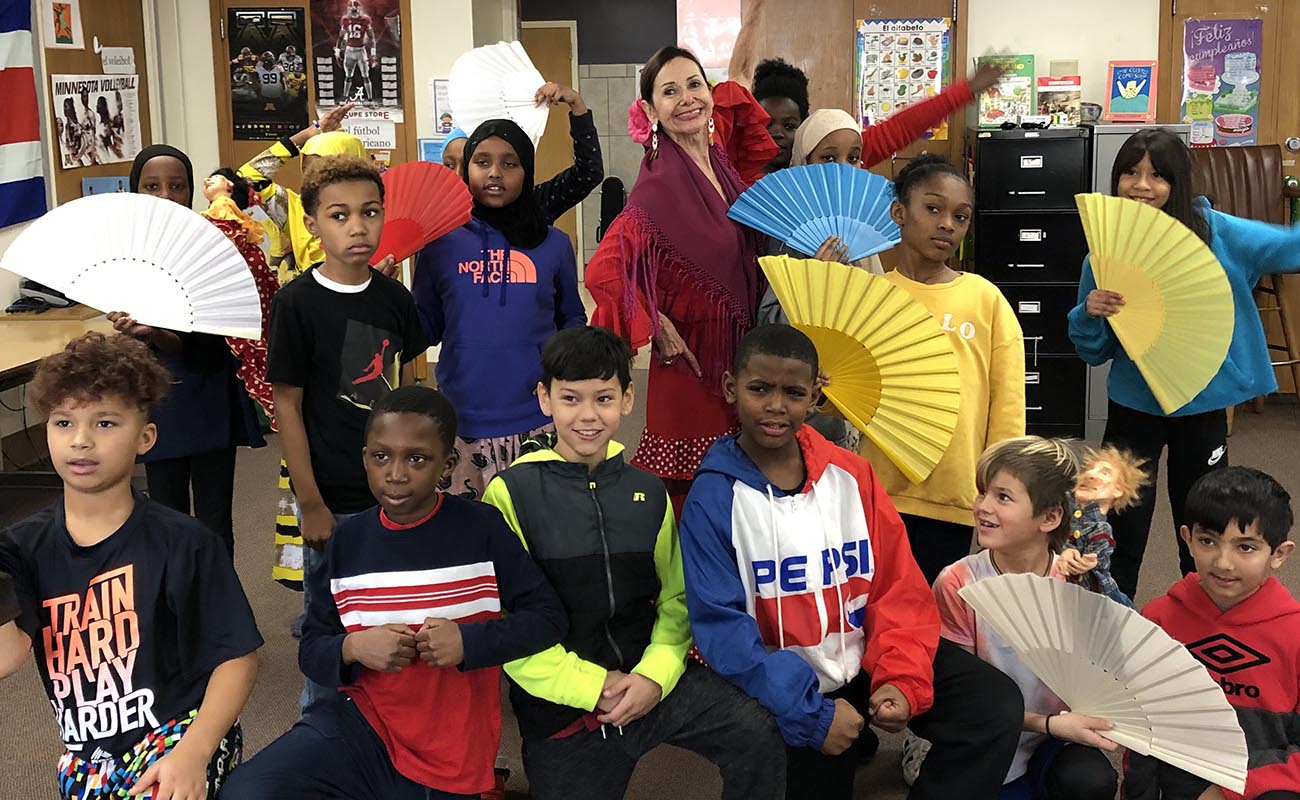Susana di Palma, the best of both worlds
Susana di Palma (Minnesota, USA 1947), a lady with a mission. She’s one more in the line of flamenco movers and shakers outside Spain with a sociocultural agenda, and a deep attachment to the art-form.
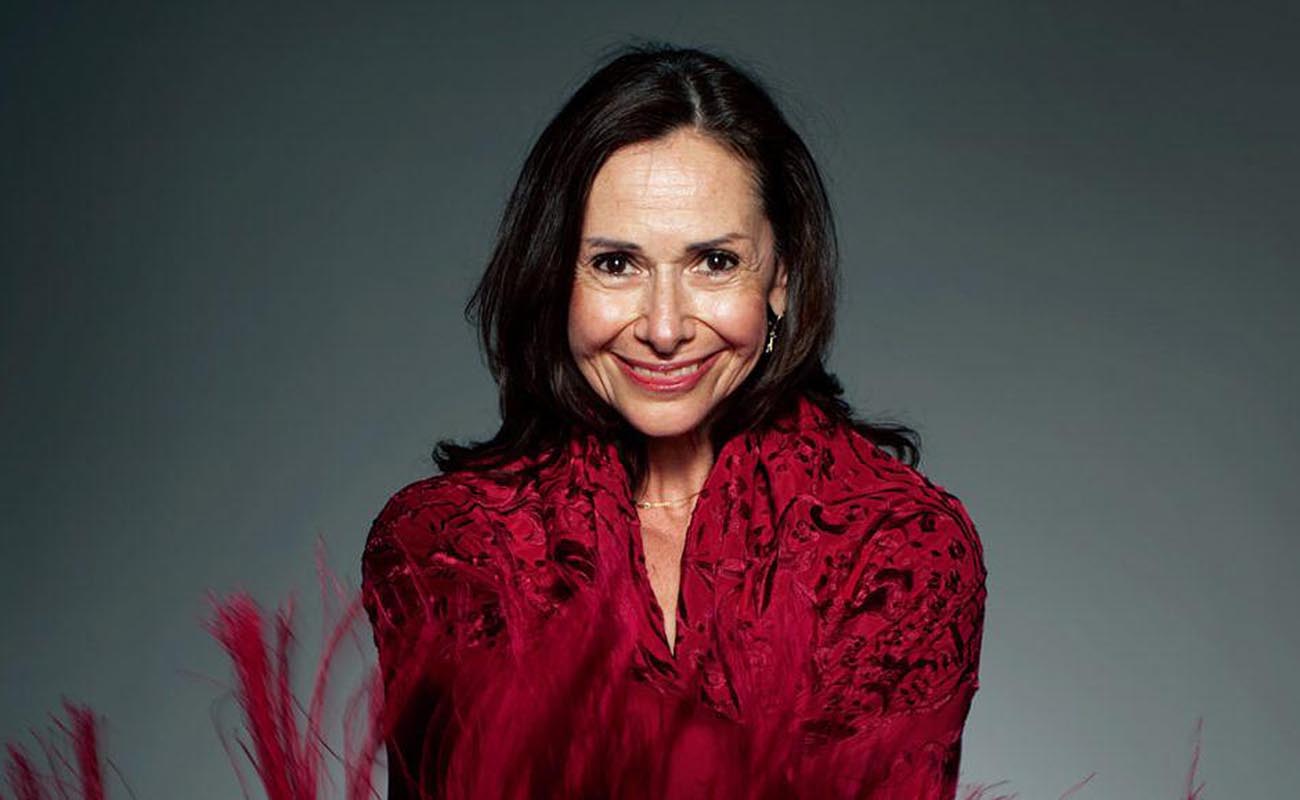
Take a can of Coke, shake it energetically then open it and watch the explosion. That’s what it’s like being around Susana di Palma (Minnesota, USA 1947), a lady with a mission. She’s one more in the line of flamenco movers and shakers outside Spain with a sociocultural agenda, and a deep attachment to the art-form.
Forty years ago in Minnesota, where your eyelashes freeze solid outdoors in the winter and people are known for being reserved in a way that does not typify flamenco, Susana di Palma founded Zorongo Flamenco Dance Theater, a company that presents both traditional flamenco programs and original theater flamenco works. She is choreographer and artistic director of the company, and has received numerous awards for outstanding commissioned choreography.
We’ve seen the unflagging commitment of the Encinias family in Albuquerque, New Mexico, the dedication of New York-based Carlota Santana and her Flamenco Vivo project as well as Beth Nesbitt who defends southern California with high-level workshops and productions, not to mention the dynamic force behind Expoflamenco, Jafelin and Mitch Helten based in Vancouver and Jerez, in addition to others whom we’ll be meeting in the coming months. All have at least one thing in common: the sincere belief that flamenco is more than an art-form, that it has a healing quality that speaks to all people, and the power to bring them together with positive energy. Perhaps these are qualities that inhabit all cultural endeavors, or maybe flamenco does really have an exceptional spiritual dimension that sets it apart and crosses geographic lines.
Susana di Palma’s fascinating story
I first began Spanish classical dance when I was 5 years old with a former vaudeville dancer who danced with La Meri. She taught me how to play castanets and I began performing “Spanish Eyes” all over the northland. Being Italian and Ojibwe [Native American ethnic group], I was considered exotic in the North American Midwest.
In the early 1970s I went to New York to study with Mariquita Flores and María Alba. I was intrigued that María was doing a theater work called Yerma based on the play by Federico Garcia Lorca. On returning home I immediately went to the library and got all of Lorca’s plays.
My future was decided, and thus the adventure got underway. I went to Madrid and began studying with Rosario [former partner of Antonio el Bailarín] and then to Sevilla to study with Enrique “El Cojo”. Those were still Franco years and a single female foreigner raised eyebrows.
In Madrid in 1974, I was hired to dance in the tablaos Cuevas de Nemesio and Canasteros which was an immersive learning experience! I studied at the original Amor de Dios with Maria Magdalena, jota with Pedro Azorín, Tomas de Madrid, Paco Fernández and others.
One day in 1977, La Singla appeared at the studios looking for a dancer for her Costa Brava tour. She was talking outside of Ciro’s class as I entered, and Ciro told her to take me in the next studio for an audition. Somehow I got it right and she hired me for a five-month tour. The company was small: dancers Antonia La Singla, Pepa Coral from Sevilla [sister of Matilde], Isidro El Mono from Madrid, singer El Boína from Cádiz, guitarist Juan Maya Marote and myself. I was a soloist and had to hide being a foreigner. Antonia La Singla was a great inspiration.
In Madrid in 1978 I saw the production of Andalucia Amarga by La Cuadra de Sevilla directed by Salvador Távora. That changed my life! I realized that flamenco could address social concerns and make sense of our universe. The suffering of the pueblos, universal lamentation, movements against repression, no glamor.
I eventually returned to Minnesota drawn by the state’s funding for the arts. I had just read Doña Flor and Her Two Husbands by Jorge Amado, and decided to create a theater flamenco work. However, I had gone to meet with Távora in Sevilla and begged him to let me apprentice with him. He agreed, but then the Joyce Theater agreed to present my production Doña Flor. I faced the dilemma of devoting my life to another’s artistic vision, or following my own madness.
I kept going back and forth from Minnesota to Madrid, and in 1982 bought a flat in Madrid planning to have the “best of both worlds”. I studied intensively with Carmen Mora, Merche Esmeralda and Manolete. I also went to Sevilla to study with Manolo Marin whom I consider one of my most inspirational maestros along with Pepa Coral.
In 1982 I founded the non-profit organization Zorongo Flamenco Dance Theater in Minneapolis. Since then I’ve created over twenty-five theater flamenco works. Most were conceived to help me make sense of our world and reflect on sociopolitical issues such as Garden of Names dealing with political torture in Argentina and Guantanamo, Zorro, on Native American boarding-school abductions (my grandmother’s story), Encuentros, an imaginary meeting between African American actor Paul Robeson and García Lorca, Tra Ti Ti Tran Tran Toro, a flamenco puppet show on immigration, Tales of the Inquisition on political and religious oppression, Romería, about environmental conservation, Gernika, which was antiwar and Casita incorporating American gospel and blues with flamenco to tell stories of homeless women that I heard while volunteering at a shelter. I also created works on Frida Kahlo, Sadja, San Juan de la Cruz, Noche Oscura, Sor Juana de La Cruz and many others inspired by Lorca. My next work is going to be Conference of the Birds inspired by the Persian mystic Attar on transcendence, and a work on stolen babies in Spain’s history, and the need for choice.
Having Zorongo as a non-profit, allows us to get funding to bring in guest artists and create work. I’ve also been awarded funds to return to Spain to study and attend the Bienal de Sevilla and Festival de Jerez, although I’ve never applied for financial support from Spain.
Over the years we’ve brought Spanish artists such as Manolete, Domingo Ortega, Belén Maya and Manolo Marín among others. Recently, getting visas has been very difficult, so bringing artists from Spain is on hold unless they have visas. There are no professional flamenco singers in Minnesota so we bring in singers residing in the USA.
This pandemic time has been wonderfully wild. I was at the 2020 Festival de Jerez and left Spain on March 11th – just in time! With the world shut down, I immediately got busy and created Decameron 20:20 inspired in the work of Giovanni Boccaccio. I created this with flamenco artists isolated in varios places: Belén Maya, who was stuck in Rome, José Luis Rodríguez in Miami, Emilio Ochando and Jeanne d’Arc Casas in Madrid, Fanny Ara in San Francisco, Isaac Tovar in Sevilla, Jesús Muñóz in Santa Fe and myself. We met every day for 10 days via Zoom, and each created two minutes a day of choreography to José Luis’ music on how we were coping with the pandemic isolation. I also created a work called Requiem for Lost Dreams in which I took the part of Death who is exhausted after all this.
We just finished a Minnesota State tour of Casita and performances in St. Paul. Zorongo school has continued with classes and we look forward to once again having guest artists from Spain here to inspire us. I hope to be at the Bienal de Sevilla in September without fail!


